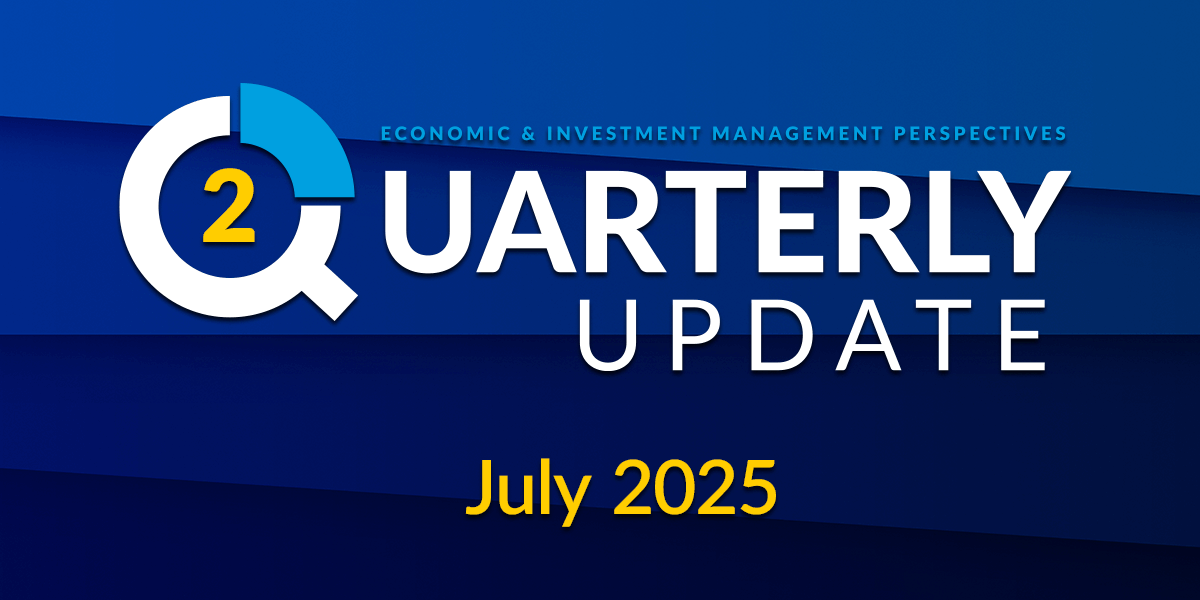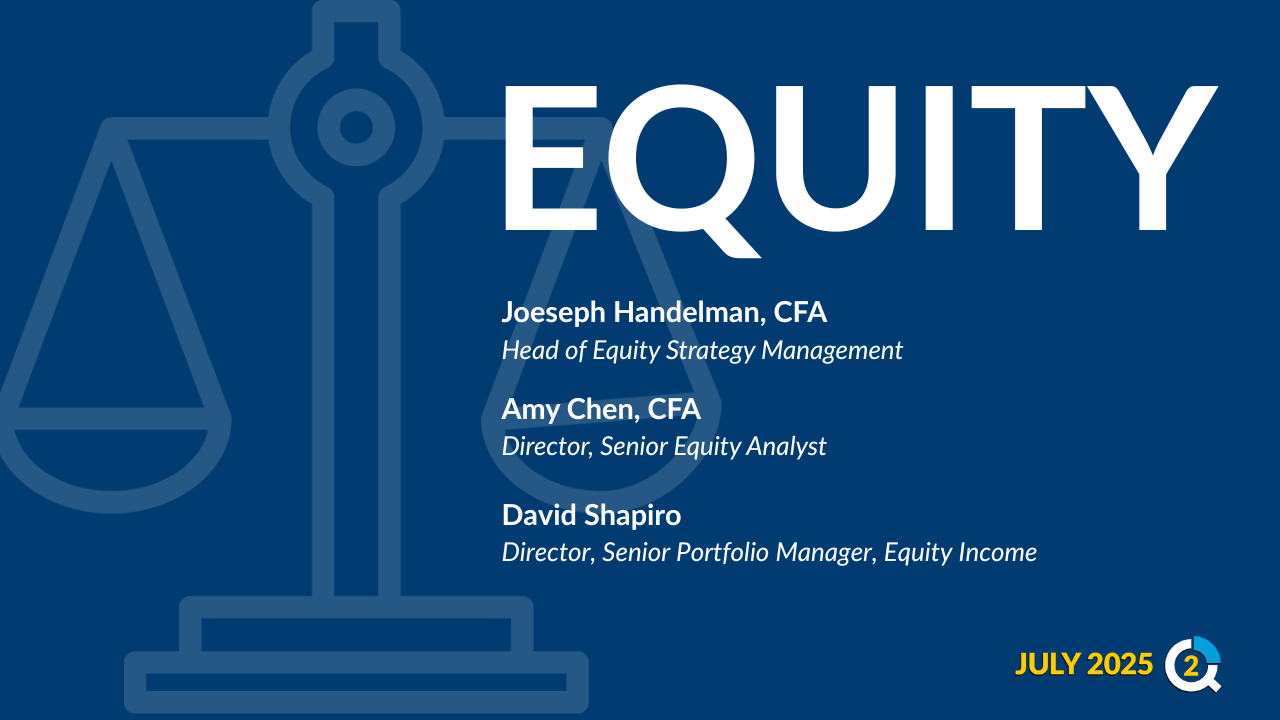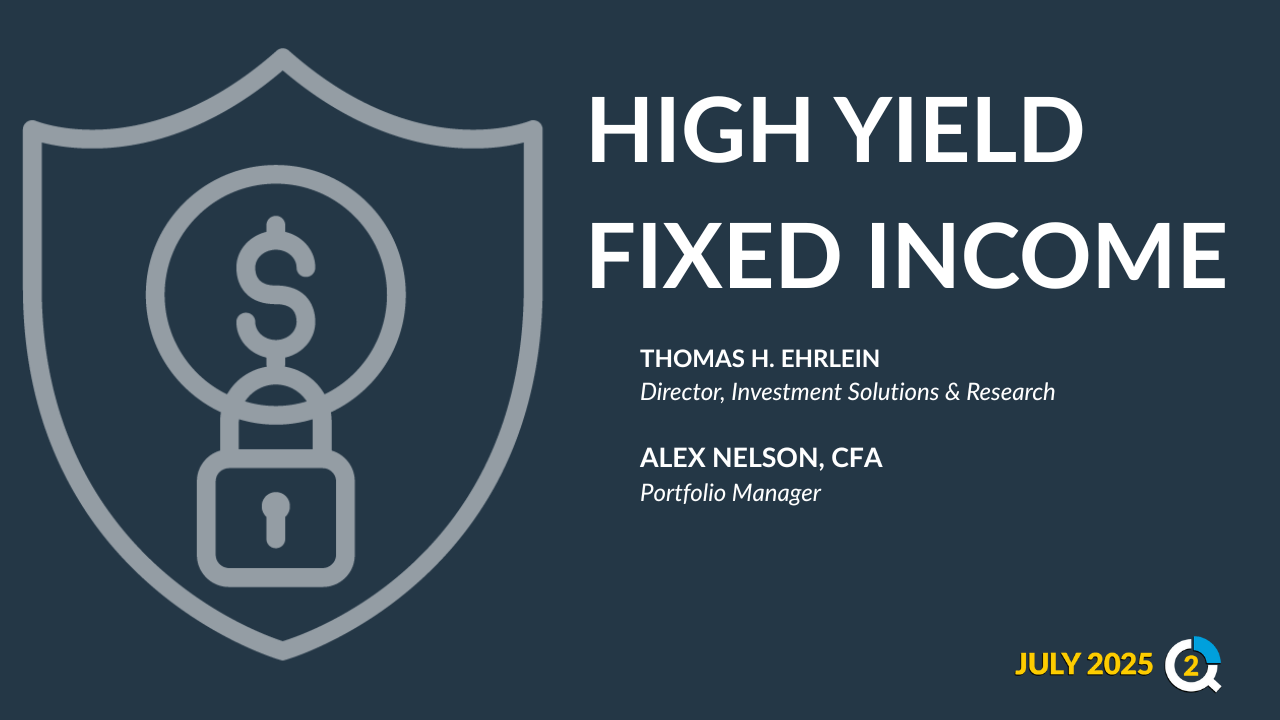
The Fed: Clear as Mud
July 23, 2025
Key Points:
- The recent economic data is what central banks dream of.
- The Fed has repeatedly said that it wants greater clarity on the impact of policy changes before making its next move.
- CNR has expected the tariffs to slow economic growth compared to last year. We expect these to slow growth, not derail it.
The recent economic data is what central banks dream of. In the past three months, the unemployment rate has averaged just 4.2%, and the annualized rate of CPI was 2.4%.
These are excellent levels. Economists generally view full employment as an unemployment rate within the range of 4.0% to 4.5%, and the Fed’s target inflation rate is 2.0%. This data is enough information for the federal funds futures market to expect two interest rate cuts this year, of 25 bps each.
In the past, the Fed would analyze that data to establish its forecast. However, at this time, making forecasts that carry a high level of confidence has become far more difficult for the Fed.
To the Fed, the level of uncertainty about the future remains highly elevated, primarily due to the federal government’s planned polices that may have a powerful impact on the economy. The most notable is its tariff policy. What will the tariff rate be? How much of that tax will be absorbed by businesses, which would impact corporate profitability? How much will be passed on to consumers? The answers to these questions will impact inflation and inflation expectations. But the answers are difficult to discern, since the tariff increases that are expected to occur have not happened since the 1930s, so there is no recent data to compare them against. The Fed has repeatedly said that it wants greater clarity on the impact of policy changes before making its next move.
In addition to unknown tariff impacts, there will be economic impacts from the mass deportations of migrants, the increase in layoffs of federal workers, stimulus from the new budget, and planned reductions in federal regulations.
With that background in mind, CNR continues to believe the Fed will return to its easing of monetary policy that it started last September. It had reduced the federal funds rate by 100 bps in the fourth quarter of 2024. Since December, the Fed has stood on the sidelines as it awaited finalization of the administration’s policies.
Since the beginning of the year, CNR has expected the tariffs to slow economic growth compared to last year. These will slow growth, not derail it. The federal funds rate is considered restrictive by the Fed’s definition (Chart 1). That gives the Fed room to lower interest rates to restimulate the economy (Chart 2).
Chart 1: Federal Funds & Fed’s Longer-Term Rate
%, not seasonally adjusted
Source: The Federal Reserve, as of July 2025. Past performance is no guarantee of future results.
Chart 2: Federal Funds Futures: Change from Current Level
%, as of July 22, 2025
Source: Bloomberg’s WIRP page as of July 22, 2025. Past performance is no guarantee of future results.
Important Information
The views expressed represent the opinions of City National Rochdale, LLC (CNR) which are subject to change and are not intended as a forecast or guarantee of future results. Stated information is provided for informational purposes only, and should not be perceived as personalized investment, financial, legal or tax advice or a recommendation for any security. It is derived from proprietary and non-proprietary sources which have not been independently verified for accuracy or completeness. While CNR believes the information to be accurate and reliable, we do not claim or have responsibility for its completeness, accuracy, or reliability. Statements of future expectations,estimates, projections, and other forward-looking statements are based on available information and management’s view as of the time of these statements. Accordingly, such statements are inherently speculative as they are based on assumptions which may involve known and unknown risks and uncertainties. Actual results, performance or events may differ materially from those expressed or implied in such statements.
All investing is subject to risk, including the possible loss of the money you invest. As with any investment strategy, there is no guarantee that investment objectives will be met, and investors may lose money. Diversification may not protect against market risk or loss. Past performance is no guarantee of future performance.
© 2025 City National Bank. All rights reserved.
Index Definitions
S&P 500 Index: The S&P 500 Index, or Standard & Poor’s 500 Index, is a market-capitalization-weighted index of 500 leading publicly traded companies in the US It is not an exact list of the top 500 US companies by market cap because there are other criteria that the index includes.
Bloomberg Municipal Bond Index: The Bloomberg US Municipal Bond Index measures the performance of investment grade, US dollar-denominated, long-term tax-exempt bonds.
Bloomberg Municipal High Yield Bond Index: The Bloomberg Municipal High Yield Bond Index measures the performance of non-investment grade, US dollar-denominated, and non-rated, tax-exempt bonds.
Bloomberg Investment Grade Index: The Bloomberg US Investment Grade Corporate Bond Index measures the performance of investment grade, corporate, fixed-rate bonds with maturities of one year or more.
The Bloomberg Magnificent 7 Total Return Index: Bloomberg Magnificent 7 Total Return Index is an equal-dollar weighted equity benchmark consisting of a fixed basket of 7 widely-traded companies classified in the United States and representing the Communications, Consumer Discretionary and Technology sectors as defined by Bloomberg Industry Classification System (BICS).
Nasdaq is a global electronic marketplace for buying and selling securities. Its name was originally an acronym for the National Association of Securities Dealers Automated Quotations.
The Dow Jones Industrial Average (DJIA) tracks thirty of America’s biggest and most established companies, acting like a quick temperature check of the U.S. economy.
The MSCI USA Large Cap Index is designed to measure the performance of the large cap segments of the US market. The index covers approximately 70% of the free float-adjusted market capitalization in the US.
The Bloomberg Investment Grade Corporate Bond Spreads refer to the spreads between investment grade, fixed-rate, taxable corporate bonds.
BVAL Municipal AAA Benchmark is a municipal bond benchmark. It provides a 5% coupon benchmark yield curve for high-quality US municipal bonds with an average rating of “AAA” from Moody’s and S&P.
The 10-year BVAL AAA municipal treasury index compares the yield on a AAA rated municipal bond to that of a Treasury before factoring in the effect of taxes.
The Morningstar LSTA US Leveraged Loan 100 Index is designed to measure the performance of the 100 largest facilities in the US leveraged loan market.
The ICE BofA Diversified High Yield US Emerging Markets Corporate Plus Index tracks the performance of US dollar denominated below investment grade emerging markets non-sovereign debt publicly issued in the major domestic and eurobond markets.
The Palmer Square CLO Senior Debt Index is a rules-based observable pricing and total return index for CLO debt for sale in the United States, rated at the time of issuance as AAA or AA (or an equivalent rating).
The Russell 3000 is a broad equity index composed of the 3,000 largest U.S. listed stocks, representing more than 95% of the investable American stock market.
The MSCI ACWI ex USA Index captures large and mid cap representation across Developed Markets (DM) countries (excluding the US) and Emerging Markets (EM) countries. The index covers approximately 85% of the global equity opportunity set outside the US.
Definitions
The “core” Personal Consumption Expenditures (PCE) price index is defined as prices excluding food and energy prices. The core PCE price index measures the prices paid by consumers for goods and services without the volatility caused by movements in food and energy prices to reveal underlying inflation.
A leveraged loan is a type of loan that is extended to companies or individuals that already have considerable amounts of debt or poor credit history.
Yield to worse (YTW) is the lowest potential yield that an issuer can pay on a bond without defaulting.
The Magnificent 7 refers to a group of major tech companies with stock growth that far outpaced the high-performing S&P 500 in recent years. Coined in 2023, the group consists of Alphabet, Amazon, Apple, Meta Platforms, Microsoft, Nvidia, and Tesla.
© 2025 City National Bank. All rights reserved.
Non-deposit investment Products are: • not FDIC insured • not Bank guaranteed • may lose value
Stay Informed.
Get our Insights delivered straight to your inbox.
More from the Quarterly Update
Put our insights to work for you.
If you have a client with more than $1 million in investable assets and want to find out about the benefits of our intelligently personalized portfolio management, speak with an investment consultant near you today.
If you’re a high-net-worth client who's interested in adding an experienced investment manager to your financial team, learn more about working with us here.


.png)
